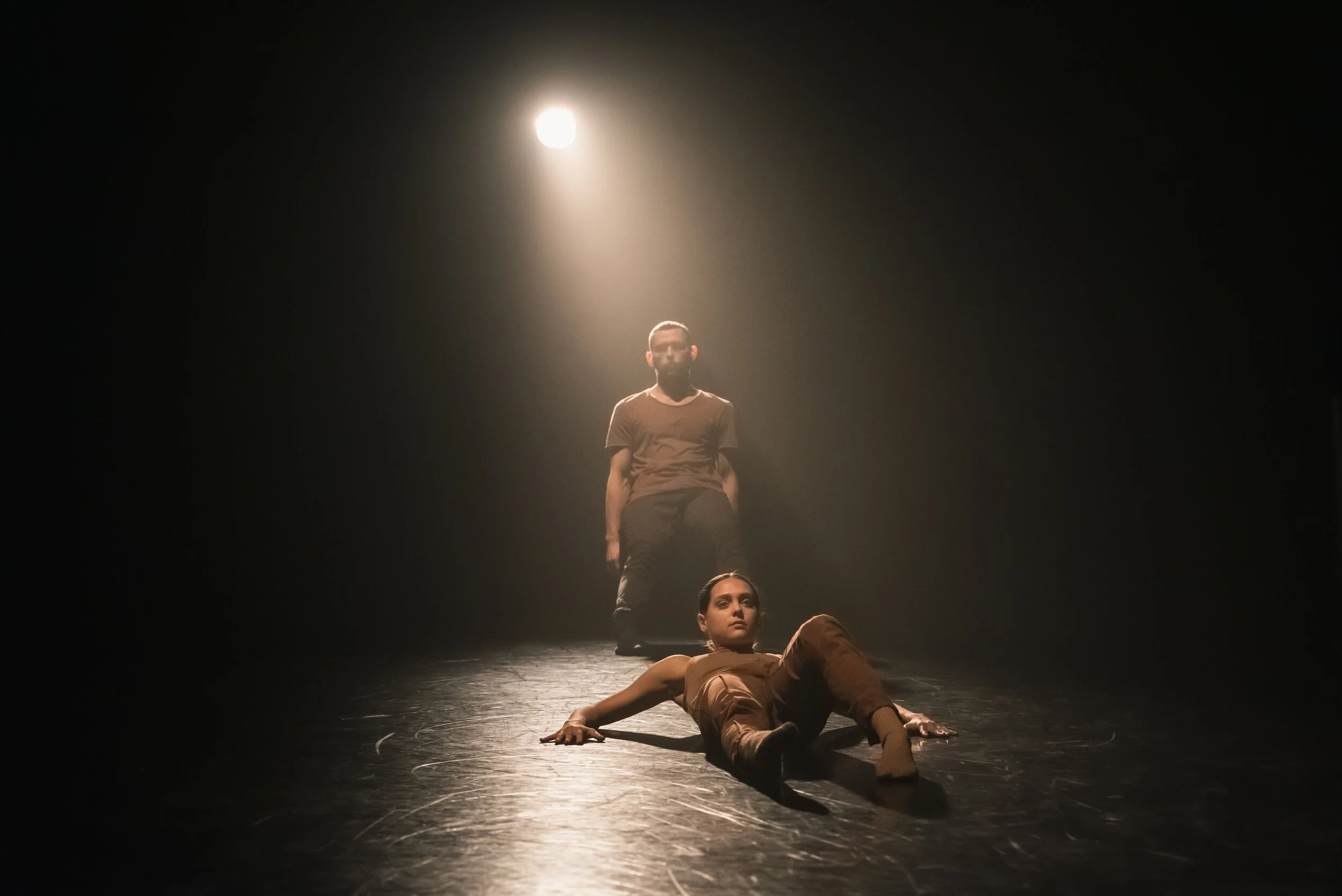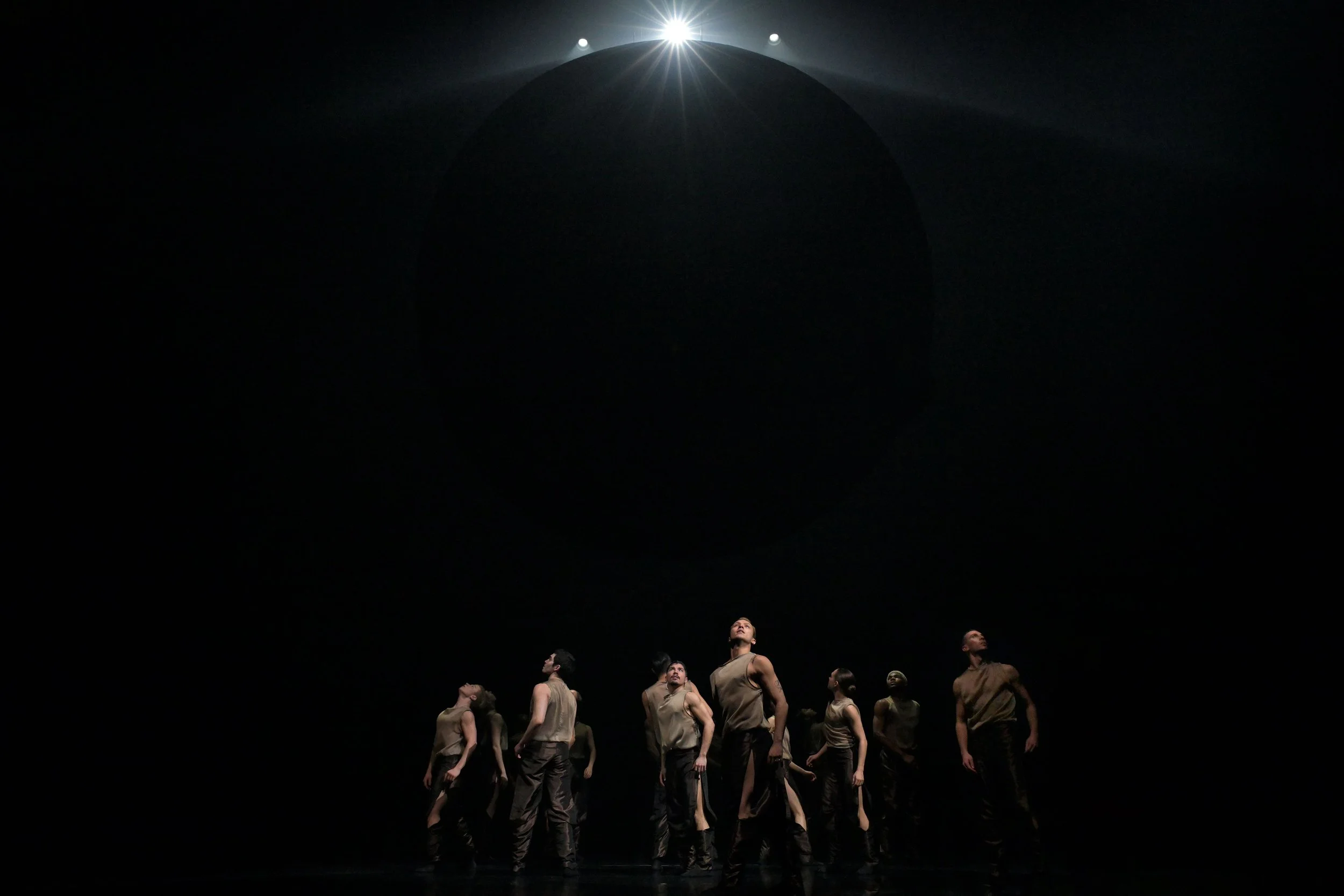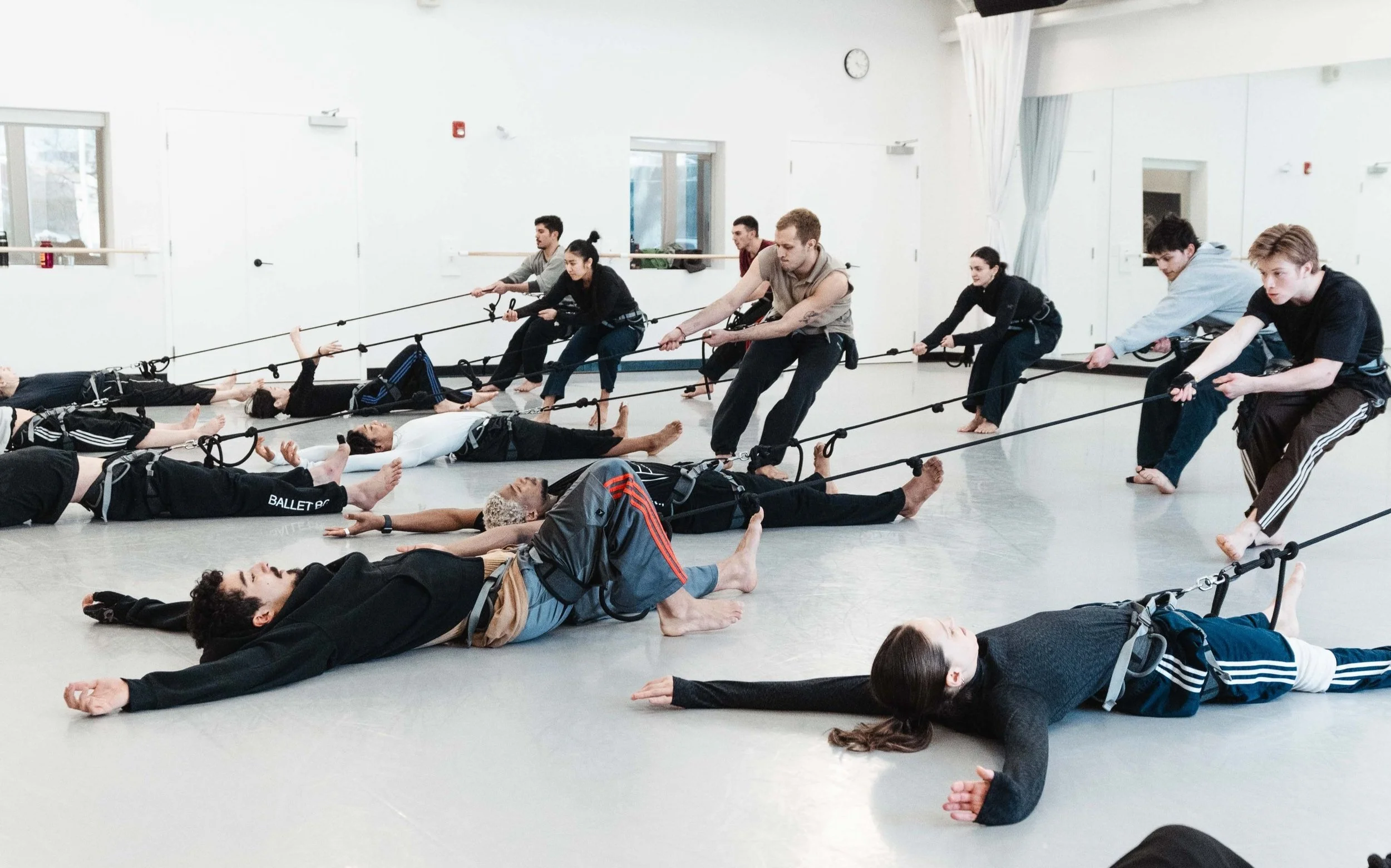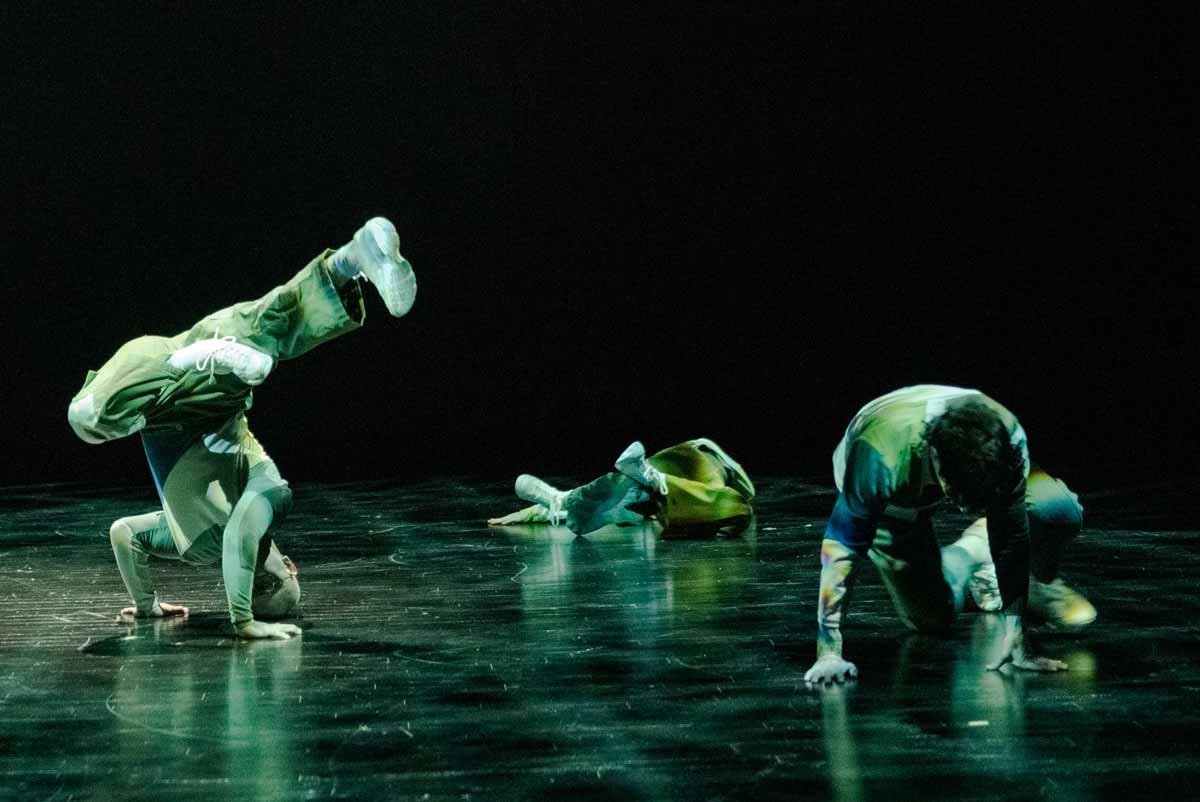Livona Ellis joins other Ballet BC members displaying their choreographic skills in Take Form
Dancers rise to the challenge after a long year of disappointments
Livona Ellis. Photo by Michael Slobodian
Brandon Alley and Sarah Pippin in The Valenced Others. Photo by Four Eyes Portraits
Ballet BC presents Take Form on February 25, streaming from 5 to 10 pm
IT’S BEEN a long year since Vancouver audiences have seen Ballet BC perform, but the chain of disappointments is finally coming to an end
The company will stream Take Form, its first show since COVID-19 hit, and a chance to see the dancers express themselves through their own choreography.
It’s been a long time coming. After total pandemic lockdown last spring, the company’s 2020-21 season had a delayed start due to restrictions: instead of the usual August, the initial safety plan only allowed dancers to begin training and rehearsing in October. Temperatures were monitored, physical distancing and mask wearing were in place, and capacity per studio was limited. A break finally came in November, when health authorities allowed Ballet BC to follow the same protocols as professional athletes (like members of the Canucks and Whitecaps teams), and the company could fully work together.
But when new provincial health restrictions banning gatherings hit suddenly later that same month, the company had to postpone a socially-distanced live presentation of new work by artistic director Medhi Walerski at the Polygon Gallery. They hoped to stage it in February, but come the new year, it quickly became apparent that wasn’t going to happen, either.
And so Ballet BC has switched direction quickly, and in the process it’s brought to life a choreographic-lab experience that the company has talked about for years. Take Form, streaming Thursday, finds its dancers and artists-in-residence creating their own short works. And it promises to show audiences new sides to the troupe.
“Not performing: we feel it and we’re grieving it, but I think we’ve gone past that point now,” says upbeat dancer Livona Ellis, who’s choreographed a new work on the program. “You want to hold on to what should have been. We would have been perfomring and touring. But now we can really take the time in the studio to work on our craft—things we would have missed if we were workign toward the end goal. Before we know it, it’s going to pick up. Now is the time to dig a little deeper.”
Walerski suggested the dancers create a show of their own work. He was drawing on his own experiences at Nederlands Dans Theater, which encouraged its artists to choreograph even as they worked as performers. Talk of a similar dance lab, where artists learn not only to choreograph but to light and produce their own works, predate his arrival at the helm of Ballet BC in July 2020—but he’s talked about it as a priority.
Ellis is one of the dancers who started cultivating her choreographic skills years ago, for the apprentice company at Arts Umbrella. More recently,`she created a solo work for Mary Louise Albert’s Solo Presence/Past Into Present show, which streamed in December.
Whereas choreography is relatively new for some of the dancers showing work on the Take Form program, Ellis feels it’s become an integral part of what she does. “I am choreographing on a lot of people and on myself, so there really are two sides of my artistic practice now,” she says, still expressing a bit of a surprise that it’s developed that way.
Her piece on the program, called The Valenced Other, is a pas de deux starring a company veteran and a newcomer: longtime dancer Brandon Lee Alley pairs with emerging artist Sarah Pippin, a North Carolinan who’s come to the company from the Juilliard School.
Ellis says the piece’s themes grew out of the time of quiet reflection the early months of the pandemic offered.
“It’s not my ‘COVID piece’, but definitely during the early months of the pandemic, when I was not working and living at home, I had a lot of time to sit with myself and think about how people interact with the world,” she says. “I thought about if others aren’t there, how does that interaction change? There’s a shift in self-awareness.
“I usually don’t have a lot of time to stop and think like that,” she adds. “You have to slow down to keep going.”
At the height of restrictions, Ellis originally started creating the work as a solo for herself, in which she would duplicate herself on film. Take Form, and the opening of restrictions, have allowed her to reimagine it as a duet. “It’s much easier to take some distance from the outside and see your work,” she says.
She’s enjoyed watching her dance colleagues show diverse sides of themseves as well. “You get to see different sides you dont see in the studio,” she says. Normally we’re embodying different people’s repertoire and what they want to express. With this we can see what’s going on in our minds.”
Pointing to colleague Zenon Zubyk’s trio on the program, she says, “He’s such a funny person and so smart, and there’s something deeply emotional and kind of dark about his piece. They’re all wearing his clothes, like three mini Zenons. It’s set to house music and the theme is kind of like a nightclub.
“And Kirsten Wicklund did a a beautiful duet with Jordan and Parker. It’s en pointe, and we haven’t danced on point for this season or last season,” Ellis adds. “So it’s totally different—a contemporary ballet. There’s a huge range.”
It speaks to Ellis’s positive outlook that she finds herself inspired and busy, and not dwelling on the fact she can’t perform under the spotlights of the Queen Elizabeth Theatre stage or tour to Europe with the company. Among other projects, she’s taken on roles as an advisor to Mary Louise Albert’s BC Movement Arts Society, and has been working as a regular instructor at Arts Umbrella, where she trained before joining Ballet BC in 2010. She has also choreographed a new piece that will stream as part of a Dances for a Small Stage event next month.
Meanwhile, Ellis reports that performing in the strict bubble of Ballet BC’s rehearsal halls at the Scotiabank Dance Centre actually feels “quite normal” these days. She’s glad to see dancers treated like the professional athletes they are, instead of the art form being seen as a “hobby or something”. Everyone just has to, like the members of all pro teams these days, be rigorous about limiting their interactions outside of the studio. “If one person gets it, the whole room has to isolate for two weeks,” she says.
Reflecting on the resilience she and Ballet BC’s other dancers have tapped over the past year, Ellis says she’s gained an even deeper understanding of the importance of art in our world.
“The reality of where we're at right now is we could hold on and be bitter, but we've all been very grateful we can show up, dance, and create new work," she says. "It shows you how vital dance is in our community."















